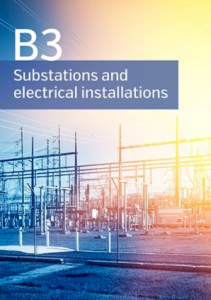
A3 -Transmission & Distribution Equipment and B3 -Substations and Electrical Installations Technical Liaison Meeting
Held at The University of Manchester | on Wednesday 7th February 2024
In person 9:30 – 16:40 | Online 10:00-12:30
About this event
This meeting was held to provide a high-level overview of the ongoing activities in CIGRE related to Study Committee A3 (Transmission & Distribution Equipment) and B3 (Substations and Electrical Installations) led by UK Regular Members Matthew Iles (A3) and Mark Osborne (B3). There were presentations on a variety of topics including challenges with new gas SF6 alternatives, knowledge transfer and other topics pertinent to the industry.
The second goal of the session was to hold open discussions and to encourage sharing of challenges faced by members. Worldwide the power industry is changing quicker than ever, delivering a lot of stuff, delivering it quickly, and frequently adopting new technology faster than is comfortable, or where standards might be lacking or need changing. This is all happening against a backdrop of supply chain constraints, a changing supply market, challenges with non-standard products and requirements, not enough people to do things the way we have done in the past, and all while continuing to manage the old asset fleet. We aim to gain a common understanding of the UK challenges and identify potential new work streams or topics of interest for UK members and identify what can do Cigre do to help.
Agenda
09:30 – Registation and Refreshments
10:00 – Welcome talk – emphasis open and honest discussion for the day to encourage sharing of challenges and identify potential new workstreams or topics of interest for UK members
- Updates from A3 Study Committee | Matthew Ilies | CIGRE UK A3 Regular Member | Updates from A3 Study Committee
- Updates from B3 Study Committee | Mark Osborne | CIGRE UK B3 Regular Member | Update from B3 Study Committee
11:00 –Presentations
- Great grid upgrade | Marc Vincent | Head of Early Project Development/Strategic Infrastructure | National Grid | The Great Grid Upgrade
- Future standardisation of DC voltage levels | Mark Osborne | CIGRE UK B3 Regular Member | Future Standardisation of DC Voltages
- Guidelines for SF6 end-of-life treatment of T&D equipment (>1 kV) in substations | Dr Tony Chen | The University of Manchester | Guidelines for SF6 end-of-life treatment of T&D equipment (>1 kV) in substations
- CIGRE NGN presentation – how optimistic do you feel about your future career in the power industry and what challenges do you foresee?
12:30 –Networking lunch and end of hybrid session
13:15 – New upcomming challenges
- Gas handling and some other topics from the user’s perspective (like long term performance, asset management and risks, etc)| Matt Barnett
- UK specific DC time constants and alternative gas breaker compliance challenges| Mark Waldron
- Bus transfer, air core reactor and other possible enhancements to standards | Matt Illes
- CIGRE TB 898 Knowledge transfer of substation engineering and experiences | Hugh Cunningham | Knowledge Transfer of Substation Engineering and Experiences
- Open floor discussion – we welcome members to raise new issues or challenges. Are there opportunities that CIGRE should look at?
15:00 – Tea and coffee break
15:20 – Roundtable discussion – Based on the discussion throughout the day, we will put together 3 key topics for further focused discussion with the following aims:
- How can we meet the challenge? Can we generate examples that can be shared more widely?
- What would we like to see changing?
- Can CIGRE be a major part of the solution?
16:20 – Wrap up and closing remarks
16:40 – Target Finish time
–
A3 – Transmission & Distribution Equipment
 Mission
Mission
To facilitate and promote the progress of engineering and the international exchange of information and knowledge in the field of equipment for distribution and transmission equipment above 1KV. To add value to this information and knowledge by means of synthesizing state-of-the-art practices and developing recommendations.
Scope
SC A3 addresses topics throughout the asset management life-cycle phases; from conception, through research, development, design, production, deployment, operation, and end-of life. At all stages, technical, safety, economic, environmental and social aspects are addressed as well as interactions with, and integration into, the evolving power system and the environment. All aspects of performance, specification, testing and the application of testing techniques are within scope, with a specific focus on the impact of changing interactions and demands due to evolution of the power system. Life cycle assessment techniques, risk management techniques, education and training are also important aspects.
Main areas of attention
Study Committee A3 monitors the evolution of technology and socioeconomic factors in a changing Electric Power Industry. These factors have a direct impact on the progress and development of transmission and distribution systems and thus on Medium, High Voltage and Ultra High Voltage Equipment. The present trends, include the following:
- Impact of inverter based technologies on T&D equipment.
- Changing equipment requirements under bilateral power flows, increased stresses on T&D equipment.
- Influence of severe weather on the equipment.
- Impact of harmonics on T&D equipment.
- Implementing the intelligence inside the equipment.
- Reliability enhancement with advanced sensors and metering, lifetime management, virtual and augmented reality.
- The interaction of T&D equipment with future High Voltage Networks including the increased introduction of distributed generation.
- Deregulation and power trading requiring energy flow optimization in networks and increased focus on overload capabilities and properties.
- MVDC and some HVDC equipment.
- A growing demand for larger capacity equipment especially for UHV equipment.
- An increasing maximum short-circuit power in networks.
- The application of intelligent equipment that allows integration within advanced control and protection schemes.
- New technologies and possible alternatives to High Voltage Equipment used presently including new switching devices, fault limiters, insulation systems and the measurement of voltage and current.
- All aspects of Life Management, Condition assessment and Diagnostics.
- A growing awareness of environmental issues, including the concern over SF6 as a greenhouse gas.
- The reduced depth of expertise within the industry requiring greater international training and education cooperation.
B3 -Substations and Electrical Installations
 Mission
Mission
To facilitate and promote the progress of engineering and the international exchange of information and knowledge in the field of substations. To add value to this information and knowledge by means of synthesizing state-of-the-art practices and developing recommendations.
Technological field of activity
- Substations and similar electrical installations.
Scope
Study Committee B3 deals with issues in all phases of the substation lifetime; from conception, through research, development, design, production, deployment, operation and end-of-life. At all stages, technical, safety, economic, environmental and social aspects are addressed, as well as interactions with and integration into the evolving power system and environment. All aspects of performance, specification, testing and the application of testing techniques are within the scope, with particular emphasis on the impact of changing interactions and requirements due to the evolution of the power system. Life cycle assessment techniques, risk management techniques, education and training are also important aspects.
SC B3 maintains close relationships with SC A3 – Transmission and distribution equipment, SC B1 – Insulated cables, SC C3 – Power system environmental performance, C6 – Active distribution systems and distributed energy resources and D1 – Materials and emerging test techniques.
SC B3 members support CIGRE work and activities in extending the electricity system in sub-Saharan Africa and developing countries globally.
Within this framework additional specific areas of attention include:
- New substation design concepts including new technologies and applications to support energy transitions (on-offshore wind, PV, hydrogen, energy storage, EV charging infrastructure, etc.) and reducing carbon footprint impacts.
- Lifetime management of substation assets including refurbishment, maintenance, monitoring, reliability and sustainability issues.
- Substation ownership issues including human resource and training needs, in-service support including quality control, environmental, health, safety and security.
- Integration of intelligence for substation Digitalization, including new digital technologies (Artificial Intelligence, Internet of Things, 3D technology, etc.) and applications to be used in all types of substations, increased use of advanced information and communication technologies.
